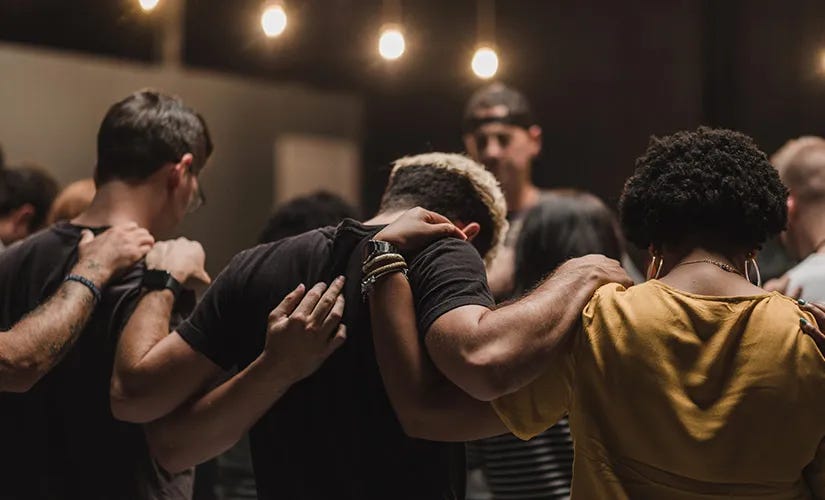John and Charles Wesley helped start a movement that transformed England in the early 18th century. That same movement spilled over to the other side of the Atlantic as God’s favor continued to be poured out in the early colonies.
The arrival of Francis Asbury to the American colonies in 1771 helped the early Methodists grow from a handful of members to more than 500,000 only a few decades later. When historians consider the larger Methodist influence in America, projections rise as high as 6,000,000 people within the first fifty years of the movement.1
In fact, at the beginning of the 19th century, Methodism exceeded the population growth rate in every state and major territory in the Union.
Many have described the rise of early American Methodism as the greatest church-planting movement in our nation’s history. Although the pace of growth began to decrease by the middle of the 19th century, its legacy lived on in the millions of worshipers, thousands of churches, and dozens of new denominations and institutions it left behind. Founded in 1968, The Wesleyan Church (TWC) traces its history back to this early movement.
We’ve been blessed with an incredible heritage.
Our Movement is Dying
But our small stream in the larger river of Methodism is facing an uncertain future as we’ve lost many of the marks of that early movement. While this is also the case with many other denominations in the United States, our recent history is alarming. The Wesleyan Church’s annual averages have drastically declined in the last ten years (2014-2024). On average, TWC has seen,
7000 fewer salvations per year.
800 fewer baptisms per year.
200 fewer churches in ten years.
1/3 of our churches haven’t baptized a single person per year.
The number of churches over 500 in attendance has dropped by 15%2.
Most would acknowledge that our beloved institution has plateaued and is now facing a season of decline.
The above statistics highlight this point. Speak with most pastors and leaders in our denomination, and very few people would dispute what is happening. While we see bright spots across North America, the overall movement is dying.
This is the nature of movements as they often rapidly increase only to become institutions or denominations and then experience a period of decline. However, if something doesn’t change in The Wesleyan Church, this decline will continue until we are forced to either merge with another denomination or become extinct.
The following are the general life stages of a movement:
A group of people rally around shared beliefs and a common cause.
Leaders emerge and call the group to sacrificially move from where they are to a new reality.
The movement gathers enough mass that it is often organized and institutionalized.
Over time, the institution becomes less and less effective due to complacency, cultural change, or both.
Motivated by their love for the institution, well-meaning members set out to reform it.
The institution rejects the needed changes, preferring to preserve its current practices, and inadvertently moves toward further decline.
The would-be reformers reluctantly break away from the institution, believing this is the most faithful way to continue the mission of the original movement.
While this life cycle is true of nearly every movement, some within The Wesleyan Church are naive enough to believe that people don’t need to disconnect from the institution to see movement once again. The authors of this series of articles are among that number.
What Will It Take?
Beginning in 2016, General Superintendent Wayne Schmidt asked Wesleyans to consider an important question, “What will it take to become a movement once again?” There has been much activity since then, but no definitive answer. A few of us embarked on a journey to consider this question again.
We are pastors, church planters, district leaders, teachers, and loyal members of The Wesleyan Church.
We’ve been reading books on the history of movements, sharing ideas, and interviewing leading historians and thinkers. This summer, we traveled to England and toured Epworth, Oxford, Bristol, London, and other key cities while meeting Wesleyan scholars who shared their insights. We asked hard questions and, in many cases, received even harder answers.
Through a series of articles, released once or twice a month, we want to share a few things we have learned and make a case for what we believe are a few of the most pressing issues we must wrestle with to continue to pursue a Spirit-led movement.
This means we will raise specific and serious questions about what we believe needs to change within our tribe. And some things need to change.
Change is usually uncomfortable and can often be divisive. But it doesn’t have to be. We draw inspiration from those first Methodists who were both the fiercest critics of the Church of England and, at the same time, its most loyal defenders.
We have called this series "A Loyal Disruption ” because we believe a disruption in our trajectory is necessary. We also believe those most loyal to our tribe should be wrestling with us. We want to invite you to the table.
Jesus has always been at the forefront of movement, and the more we study the great movements of church history, the more we are convinced that movements begin with a love for lost and broken people. This same sacrificial love was on full display throughout the Wesleyan movement.
Movements happen because of that kind of love.
Conclusion
The Wesleyan movement has been one of the most powerful and widespread movements in the church’s history. As movements go, it’s had a pretty good run – maybe the best run of any movement since the 1st century. We need to celebrate our past but also believe that God is not finished with the Wesleyans.
Perhaps as we assume a posture of listening, repenting, and, where necessary, changing our practices, God will begin to pour out his favor and usher in a new movement once again.
We recognize that there will be a variety of opinions on what changes are necessary and how seriously we should pursue those changes.
Our purpose with A Loyal Disruption is to start the conversation by sharing a few reforms that need to be discussed and a few ideas that need to be considered.
This will probably raise more questions than answers, but we believe answers will come with time.
It’s been said that a movement-turned-institution has never become a movement again. That may be true, but we are encouraged that a large number of people in current and future leadership positions in The Wesleyan Church seem to have an appetite to do whatever it takes to see our tribe become a movement again.
Jesus is still on the move. Some tribe is going to move with him. Why not us?
Signed,
Billy Wilson,
w/ Dwight Nash, Matt LeRoy, Jon Wiest, Jeremy Summers, Christy Lipscomb, Jervie Windom, Santes Beatty, Mike Wilson
If you want to stay informed about future articles, hit the Subscribe button below and share this with other pastors and leaders in The Wesleyan Church.
Addison, Steve. Movements that Change the World. InterVarsity Press, 2011, p. 87.
Wesleyan Pastor Portal








I'm in. Whatever it takes. One thing I am noting...talking about movement is fun and exciting. Movement is difficult and scary. Movements have martyrs.
This is a great start in these conversations and I am eager to read more of this. I am particularly interested in if we can at some point clearly articulate again what are our "shared beliefs and a common cause." I wonder if you were to bring 100 Wesleyans into a room and they each built that list and could only write 3 things, would they come up with more like 75 different things, and the "shared" and "common" would be too varied these days.
I have other questions, such as:
-Are our plans “too small a thing” as in Isaiah 49:6? Is God wanting to build a movement much bigger than a refresh of our little denomination. That seems to be how God works.
-Will the new Wesleyan movement be a holiness movement, or is there some new emphasis God is up to... or can holiness be rearticulated in a compelling way that sweeps up the new generation and perhaps even leaves my generation behind and lagging? That wouldn't be so bad. Would be exciting.
-What role are lay people playing? Lay people seem less engaged in what it means to be Wesleyan that at any time in our history. This is largely an ordained persons conversation. That's a sign movement is FAR away.
-Are north American political movements far too strong in the psyche of Wesleyans for us to focus on what matter more? Are our people rallied around those "shared beliefs and common causes" far more than anything our denomination has to do and say, and so the efforts are futile to get them refocused on what matters for eternity?
...Those are my initial tough questions for this august and brilliant group. I trust y'all and would follow ya where you're going. I'm cheering on this conversation.